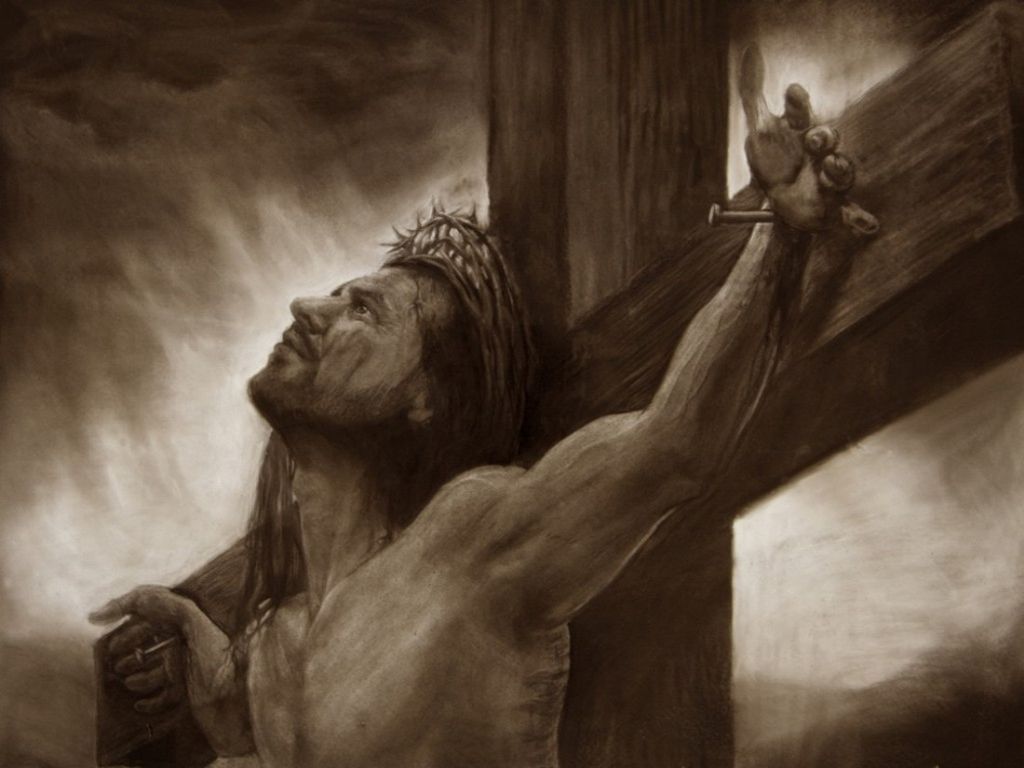 Why is Good Friday called “good” when it commemorates the blackest event in humanity’s history, the death of the Son of God? It is because on that day death itself died. One man died in obedience to His Father’s wish, that we all may live in accordance with His Father’s desire.
Why is Good Friday called “good” when it commemorates the blackest event in humanity’s history, the death of the Son of God? It is because on that day death itself died. One man died in obedience to His Father’s wish, that we all may live in accordance with His Father’s desire.
During this day the Church is at its bleakest – it is the one day in the calendar when no Mass is celebrated, in accordance with an ancient tradition no sacraments are celebrated and, outside of the Solemn Celebration of the Lord’s Passion, Holy Communion may only be given as viaticum to those close to death.
The Solemn Celebration of the Lord’s Passion usually takes place at three o’clock in the afternoon to correspond with the hour when the Gospels record that Jesus died – at the “ninth hour” (see Matthew chapter 27, Mark chapter 15, Luke chapter 23). This is not a separate liturgical action – it has no introductory rite – but a continuation of the Mass of the Lord’s Supper from the previous evening. It begins in complete silence with the altar bare. When the entrance procession reaches the sanctuary steps all bow to the altar, the clergy taking part prostrate themselves or kneel. Everyone else kneels in silence for a moment. Following the Opening Prayer the Solemn Celebration continues with the Liturgy of the Word. The first is one of the Suffering Servant Songs from the prophet Isaiah (52: 13-53: 12) while the second, from the Letter to the Hebrews (4: 14-16, 5: 7-9) speaks of redemption through the suffering of Jesus. These are followed by the reading of the account of the Lord’s Passion from St. John’s Gospel. As on Palm Sunday, this is done by three people: one taking the words of Jesus, one the other speakers and one narrating. It is customary to kneel for a moment in silence when the verse mentioning the death of Jesus is reached.
This is followed by the homily and by the General Intercessions. These are ten set prayers for the Church and for the world:
· For the Church
· For the Holy Father
· For the clergy and laity of the Church.
· For those preparing for baptism.
· For the unity of Christians.
· For the Jewish people.
· For those who do not believe in Christ.
· For those who do not believe in God.
· For all in public office
· For those in special need.
This is followed by unveiling and the Veneration of the Cross – it has been shrouded in purple for the last two weeks. The unveiling can be done in one of two ways: either a veiled cross already set up on the sanctuary is gradually unveiled or, as is our custom, an already unveiled cross is carried through the church by a priest or deacon and accompanied by two altar servers carrying candles. Whichever method is used, the unveiling is done in three stages. At each the invitation is issued, “This is the wood of the cross, on which hung the Saviour of the world”, to which all present kneel and respond, “Come, let us worship.”
The Veneration takes the form of each person approaching the cross, genuflecting before it and kissing the feet of the ‘corpus’, the figure of Christ. Two older servers are usually required to support the cross, to lift it for people who are too old or frail or otherwise unable to bend down to venerate, and using purificators to wipe the feet of the figure after each person. When everyone has Venerated the Cross it along with the candles that accompanied it during the unveiling, are placed in a stand on the altar and the altar is prepared for Holy Communion.
Preparation consists of the unfolding of a cloth on the altar, a corporal and the placing of the open missal on it. Meanwhile, the priest or deacon, accompanied by two altar servers have, gone to the Place of Reposition of the Blessed Sacrament. There is no Act of Consecration during the Solemn Celebration of the Lord’s Passion. The Blessed Sacrament that is now brought to the altar is that which was consecrated at the Mass of the Lord’s Supper on Holy Thursday. Following Holy Communion, the Blessed Sacrament is returned to the Place of Reposition and the post Communion prayers all process out in silence genuflecting to the unveiled cross. As there was no introductory rite, so there is no concluding rite to the Solemn Celebration of the Lord’s Passion. It forms one continuous liturgical action beginning with the Mass of the Lord’s Supper and ending with the Easter Vigil.
Afterwards complete silence should be observed and everything should be removed from the altar so that it is again bare.
On the evening of Good Friday it is customary to have an extended Stations of the Cross or other devotion recalling the Passion.
Good Friday, along with Ash Wednesday, is a day of fasting and abstinence.